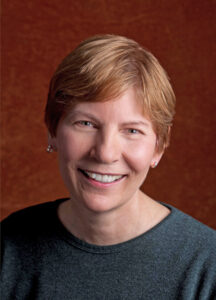By Kathy Berken

When Pope Francis recently embraced that man with the facial deformity after one of his Wednesday audiences, my first thought was, “I wonder how he felt doing that in such a public arena.” I quickly dismissed the thought because I have come to know our new pontiff by such spontaneous acts of kindness. However, as time went on, that photo really bothered me, but probably not for the reasons you might think.
When I lived and worked for those 10 years at The Arch, the L’Arche community in Clinton, I grew to accept, love and befriend people with disabilities. There were times when I honestly forgot that the men and women there had any kind of impairment. After awhile, their personalities emerged and limitations often became secondary. It was the growing relationships that developed that helped me to see them as everyday people. Sharing the same address also helped to break barriers. In L’Arche we would often say, “We’re all in the same boat, let’s keep it afloat.”
So then, why did that photo of the pope irritate me? For one, I’ve been reading a host of comments on social media calling the pope a saint. This is not good. Echoing the words of Catholic Worker founder Dorothy Day, L’Arche founder Jean Vanier also responded to someone who tried to canonize him. “Don’t call me a saint. I don’t want to be dismissed so easily.”
The love Pope Francis shows for others is surely admirable, but it’s misguided to put him on a heavenly pedestal. That makes him and the others up there responsible for being compassionate instead of us. As Christians, we are all in this boat together.
That said, there is an even deeper reason the photo upsets me. It seems to me that it is much easier to find a compassionate heart for someone with an outward disability than it is for someone whose suffering is hidden. I find that my maternal/protective instincts arise when I see a person unsteady on his or her feet, or I listen to someone struggle to speak, or I observe people being rejected for their looks. But for the rest of us whose invisible disabilities may cause us untoward suffering, I regretfully admit that I sometimes feel less compassion for them because somewhere inside of me I think that they ought to know better.
The photo of the pope caressing that man’s face is too small because it tells only part of the story. Yes, the pope shows us how to be compassionate towards those society considers outcasts, to acknowledge them as worthy of respect. But I miss the whole message if I stop there. You know the line, we all have disabilities; some are just more noticeable than others. If we know that we hide behind our façade so others don’t see our pain, then what’s to say that others don’t do the same thing? Aren’t we all in the same boat here?
I think that I can be more of what Jesus asked when I can love those who might seem to have it together, but whose internal lives are miserably broken, who live in terror, whose hearts ache for meaning, who may be ready to jump ship. Those disabilities are just as real, just as valid.
When I can see through the masquerade into the truth of all of our inner lives and embrace every piece of that, despite the pain and suffering, only then does the photo make sense. I’m pretty sure that Pope Francis already knows this, that every single human being is God’s Beloved. No exceptions.
(Kathy Berken has a master’s degree in theology from St. Catherine University, St. Paul, Minn. She lived and worked at The Arche, L’Arche in Clinton (1999-2009) and is author of “Walking on a Rolling Deck: Life on the Ark (stories from The Arch).”)







